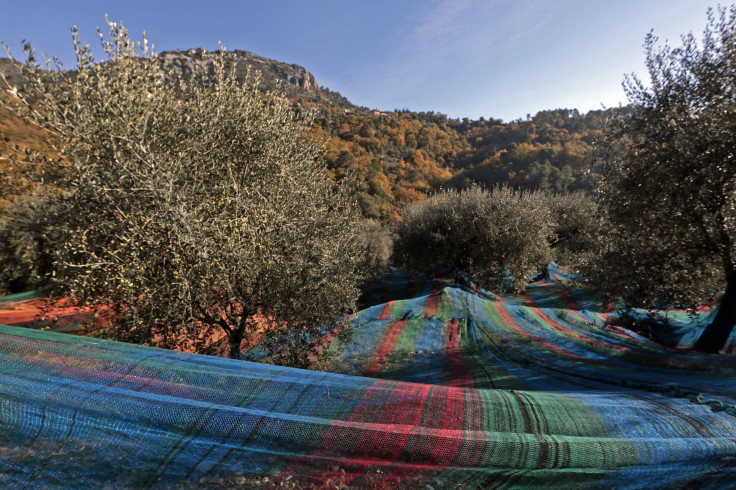Europe Olive Oil Crisis: 2014 Harvest ‘Worst Year In Memory,’ Drives Up Costs

Europe’s olive harvest was hit hard this year by bad weather and blight, which will likely lead to consumers spending more for some olive oils, according to the Associated Press. The European olive oil crisis comes at a time when Europe’s southern economies are struggling to jump-start growth.
In Italy, where national production of olive oil is expected to drop 35 percent, the bulk price for extra virgin olive oil has already jumped more than 3 euros – from 2.7 euros to 6 euros – compared to the same time last year. "This is the worst year in memory," Pietro Sandali, head of the Italian olive growers' consortium, told the AP.
The reason for Europe’s particularly bad olive harvest was infestations of olive fly and olive moth brought on by high spring temperatures, abundant rain and a cool summer, the AP reported. Olive oil is big money for Europe’s key olive harvest countries -- France, Italy, Portugal and Spain -- which produce around three-quarters of the world’s olive oil. In 2013, the European Union raked in an estimated 1.8 billion euros ($2.2 billion) in revenue from olive oil exports.
Spain is the largest producer of olive oil in Europe and accounts for 45 percent of total world oil production. The country cultivates more than 300 million olive trees, spanning an area of 5 million acres. Italy is the second largest producer at 25 percent of global totals, followed by Greece with 20 percent and California by .5 percent.
Meanwhile, in Greece, drought in 2013 led to underwhelming harvests across the southern olive belt. Growers in other parts of Europe rely on Greece to make up for any deficits in the overall market, according to the Wall Street Journal. In May, the U.S. Department of Agriculture said it expected the harvest in Greece to dip by 57 percent this year, to just 155,000 tons.
"When prices rise in one part of the Mediterranean, it lifts prices for us too," Johnny Frantoio, owner of a production mill in Volterra in the Tuscany region of Italy, told the Journal earlier this year. "Also, it's happening at a time when Asian demand for our products is growing."
© Copyright IBTimes 2024. All rights reserved.






















